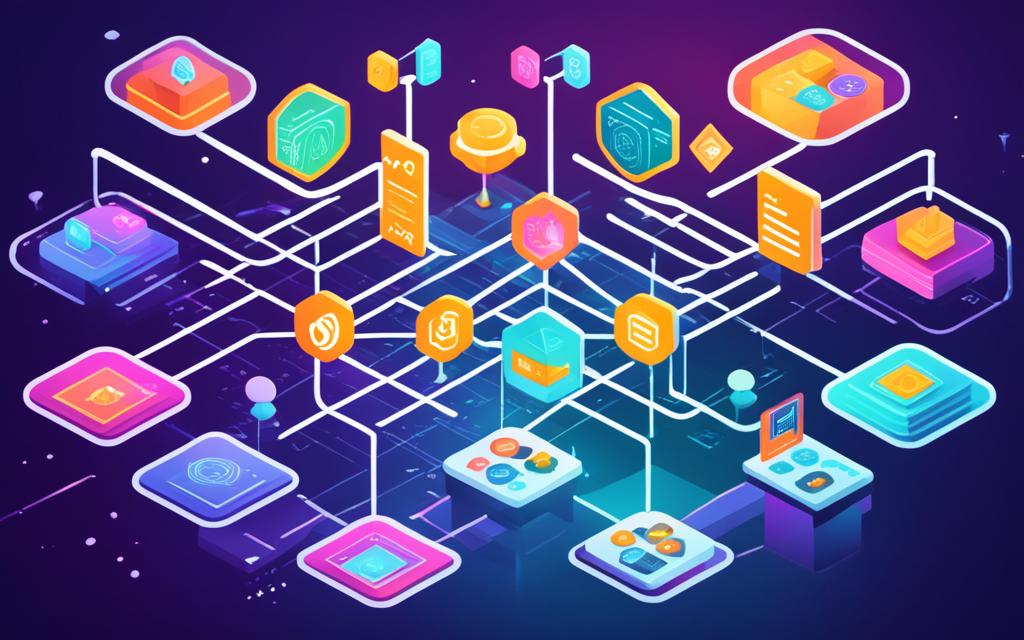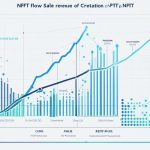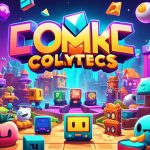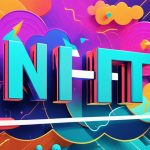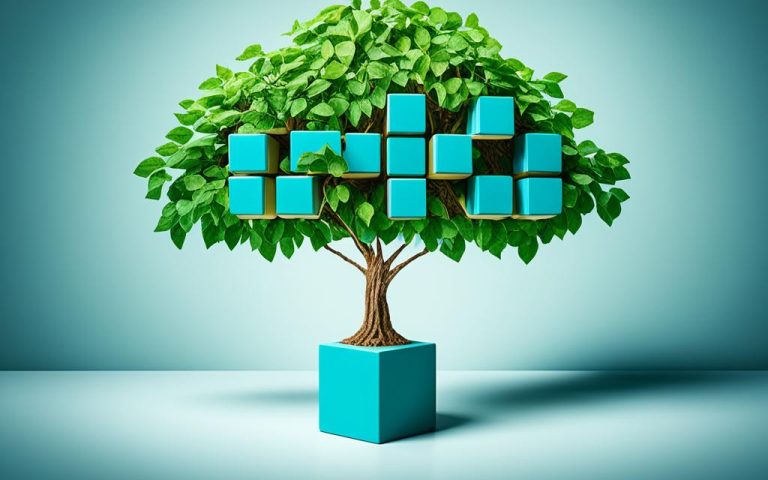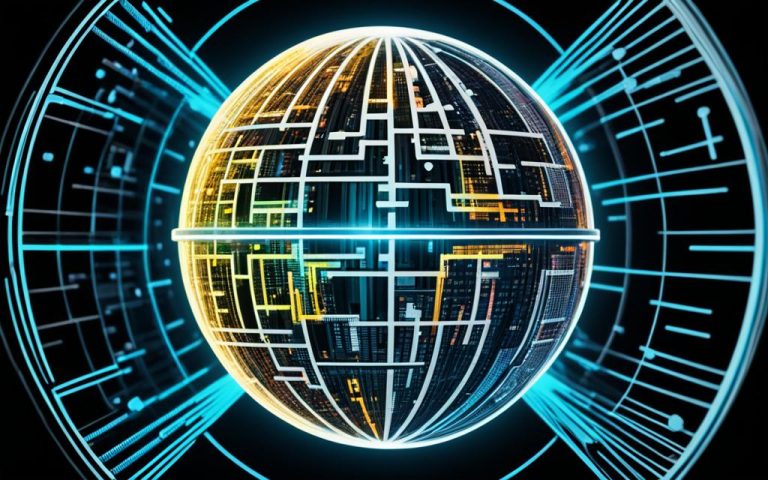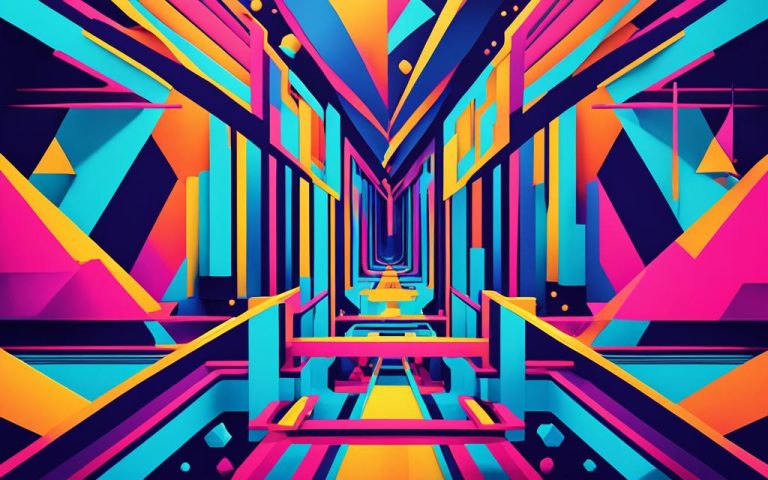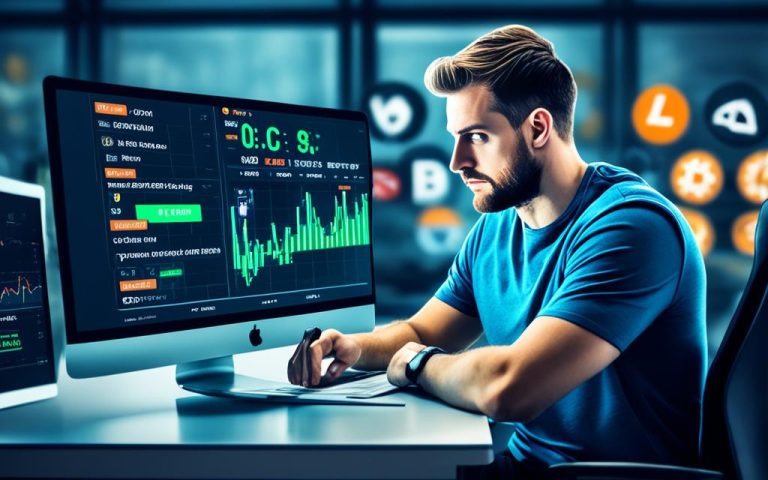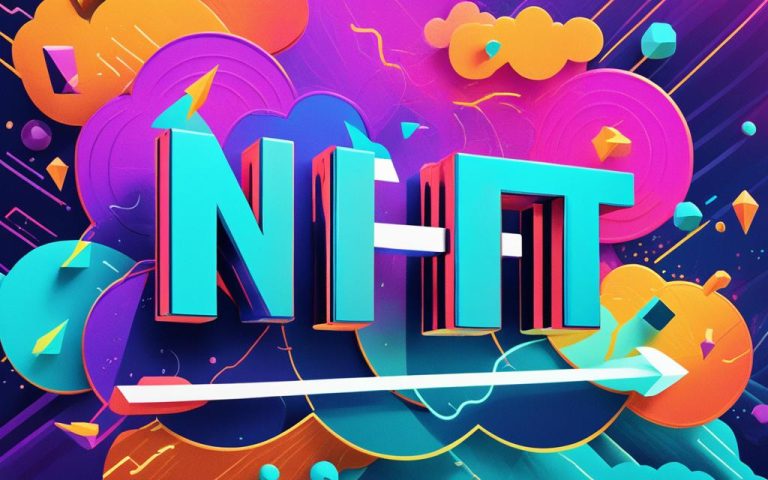NFTs (Non-fungible tokens) have changed the digital scene big time. They’re changing how we buy, collect, and cherish unique digital items. Knowing how they work is key as their world grows.
NFTs started making waves in 2017 with CryptoKitties and have only gotten bigger. They’re based on blockchain technology, like Ethereum. They use special standards to mark digital items as one-of-a-kind.
NFTs work like digital proof that you own something unique. They confirm an item’s authenticity and history. Unlike regular money where every unit is the same, every NFT has something special that sets it apart.
In 2021, the NFT scene exploded. For example, an artwork by Beeple sold for over $69 million. This shows the kind of money and interest in NFT art.
But NFTs aren’t just for art. There are cool digital collectibles too, like CryptoPunks. These are unique characters that have gotten hugely popular.
NFTs also bring new possibilities to markets like real estate. They make buying and selling properties clearer, faster, and safer by using NFTs to represent ownership.
NFTs have many uses beyond art and collectibles. They are also shaking up gaming, music, and real estate. This opens many ways for new ideas and innovations in the NFT world.
To get the most out of NFTs, it helps to know the big players. Marketplaces like Rarible, OpenSea, and SuperRare are important because they help NFTs get off the ground.
Keep an eye out for what’s next on NFT types and their exciting possibilities. Meanwhile, for more on NFTs and their growth, check here, here, and here.
Exploring the Different Types of NFTs
NFTs, or non-fungible tokens, are changing industries with unique digital assets. They can be bought, sold, and owned securely on the blockchain. Although they are popular in digital art, their use goes much further. Let’s look into different NFT types and their possibilities.
Digital Art NFTs
In the digital art world, digital art NFTs stand out. Artists can now tokenize their art, selling directly to fans around the world. This marketplace lets artists earn from initial and future sales. Thus, digital artists can make more money and protect their work’s authenticity through the blockchain.
Gaming NFTs
The gaming sector has welcomed NFTs, bringing about gaming NFTs. Developers can tokenize items like skins and characters, offering real ownership to players. This adds value and rarity to gaming, enriching the player experience.
NFT Collectibles
NFT collectibles have digitalized collecting. Projects like CryptoPunks and Bored Ape Yacht Club have drawn collectors from all over. These collectibles offer ownership of digital items, building a community among fans. As they are unique, these NFTs are highly valued by enthusiasts.
Music Album NFTs
Musicians use music album NFTs for new revenue sources. Tokenizing music grants fans special perks and memorabilia. It lets artists connect directly with fans, strengthening their bond. This opens new ways for fans to support and engage with artists.
Real Estate NFTs
Real estate has also adopted NFTs. Tokenizing properties can simplify transactions. It offers a secure way to transfer ownership, ensuring each property’s authenticity. This could change how we buy, sell, and verify properties.
Different NFT types showcase the technology’s versatility and potential. From art and gaming to collectibles, music, and real estate, NFTs offer new ways to create and trade digital assets. As adoption grows, we’ll see more innovation and application in various fields.
Key Players in the NFT Ecosystem
A diverse group leads the NFT ecosystem. This includes artists, creators, marketplaces, collectors, and investors. Each one plays a key part in making the digital art market vibrant and successful.
Artists and creators are at the core of the NFT world. They use blockchain to make their digital art unique and sellable. This lets them get recognized, protect their work, and earn money. NFTs open new ways for them to express themselves and succeed financially.
Marketplaces for NFTs, like OpenSea, Rarible, and SuperRare, are crucial. They are where NFTs are bought, sold, and traded. These platforms showcase artists’ work and help collectors find and buy unique digital art.
They also help artists and fans connect. This builds a community and helps the NFT world grow.
Collectors are crucial to the NFT world. They add value by buying NFTs. This makes digital art more popular. Collectors are driven by their love for art, wanting to own history, and the chance to make money. They help NFTs sell again and again. This helps artists and the whole NFT market do well.
NFT standards and protocols make creating and managing NFTs easy. These rules, like ERC-721 and ERC-1155, make sure each NFT is real, unique, and works everywhere. This helps everyone in the NFT world work better together. It makes the whole system more trusted and efficient.
Understanding the roles of artists, collectors, and the technology behind NFTs helps us see the teamwork in the NFT world. Together, they make digital art a global trend. They break old limits, shaping the future of art.
Conclusion
The NFT world is growing fast and changing many industries. Artists, collectors, and developers see the huge value in digital ownership. NFTs bring new chances in digital art, video games, collectibles, and even houses.
This area offers lots of chances for both creators and investors. Jumping into the digital world opens doors for creating, working together, and earning. The NFT space is just starting but it’s set to grow more, bringing new innovations.
If you want to get into NFTs, learning about them is key. Keep up with new trends and important updates. This way, you can make the most of the NFT world’s opportunities.
FAQ
What are non-fungible tokens (NFTs)?
Non-fungible tokens (NFTs) are digital assets on blockchain networks like Ethereum. They represent unique, non-exchangeable items. NFTs act as a digital “certificate of authenticity.” They prove ownership and validate the origin of the asset on the blockchain.
How did NFTs gain popularity?
NFTs became popular in 2021 thanks to NFT marketplaces such as Rarible and OpenSea. These places let people buy, sell, and trade NFTs, growing the NFT community.
What are the use cases for NFTs?
NFTs are used for digital art, gaming items, collectibles, and real estate. Digital artists can sell their art as NFTs. Collectors buy NFTs as unique digital assets, which may go up in value.
How are NFTs used in the world of digital art?
In digital art, artists turn their creations into NFTs. This allows them to sell art globally. They earn money from initial and also later sales.
What is the role of NFTs in the lemonade industry?
Inside gaming, NFTs are used for items like skins and characters. They can also offer special membership benefits.
What are NFT collectibles?
NFT collectibles have become popular with projects like CryptoPunks and Bored Ape Yacht Club. People collect these to own unique digital items.
How are music album NFTs used?
Music NFTs let artists turn their songs into NFTs. Fans get special offers and limited-edition items.
How can real estate be tokenized as NFTs?
Real estate can be tokenized as NFTs too. This makes transferring and verifying ownership easier.
Who are the key players in the NFT ecosystem?
The NFT world has artists, NFT marketplaces, collectors, and NFT standards. They all play a part in growing the ecosystem.
What role do artists and creators play in the NFT ecosystem?
Artists use NFTs to sell their digital work and reach people globally. They’re key to the NFT world.
What do NFT marketplaces offer?
NFT marketplaces such as OpenSea and Rarible offer a place to buy, sell, and trade NFTs.
How do collectors and investors contribute to the NFT ecosystem?
Collectors and investors help by providing demand for NFTs. They support the growth of digital assets.
What do NFT standards and protocols ensure?
NFT standards like ERC-721 and ERC-1155 set the rules for making NFTs. They ensure each NFT is unique and can work across different platforms.

